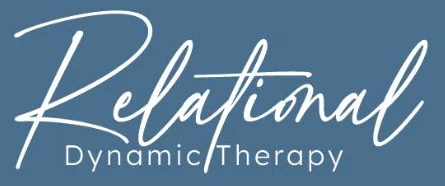Breaking the Drama Triangle: How to Have Healthier Relationships
Do you ever find yourself stuck in the same frustrating cycle with someone over and over? Constantly feeling blamed, rescuing or defending — despite how much you care about each other?
You’re not alone. Many relationship dynamics are powered by a sneaky, unconscious pattern: The Drama Triangle.
The Drama Triangle is a model developed by psychologist Stephen Karpman. It’s a cycle of three roles we find ourselves slipping into when relationship issues become too triggering, overwhelming or emotional. It’s not about assigning villains and victims; it’s about how we all play unhelpful parts to manage discomfort and stay close.
We all play our parts in the Drama Triangle in various relationships. Let’s look at how it happens and how to change.
The Three Roles in the Drama Triangle
- Victim
The Victim feels powerless, helpless or overwhelmed.
Inner Dialogue of the Victim
“Nothing I do makes a difference.”
“Why does this always happen to me?”
Perpetuating or a healthy shift
Playing the Victim position sets us up for others to rescue us or take control. The Victim position reinforces a dynamic of dependence or inadequacy. In some cases, we crave the Victim role because we want the care and protection we never felt we could get otherwise. The Victim feels smaller.
- Rescuer
The Rescuer jumps in to help, protect, or fix.
Inner Dialogue of the Rescuer
“If I can make things better, I’ll finally be valued or safe.”
Inner conflictions
The Rescuer is often a kind person with an underlying need to be needed. The Rescuer can end up making others more helpless and dependent. The Rescuer also usually neglects self-care, blurring love with martyrdom.
- Persecutor
The Persecutor criticises, attacks, or blames.
Inner Dialogue of the Persecutor
“I have to be tough or people will walk all over me.”
“If you’d just listen, everything would be fine.”
Inner conflictions
The Persecutor is an angry, bullying or dismissive role. The Persecutor is often dealing with their own insecurity or fear, but they try to cover that up with power and control. The Persecutor dynamic involves keeping other people small and at fault.
Why Do We Get Stuck in the Triangle?
The Drama Triangle roles are learned early in life as adaptive roles in our family systems. As children, we unconsciously played certain roles to maintain attachment and safety.
Later, in our adult relationships, we get reeled into this familiar drama again and again because it just feels normal — even if it’s painful. But it’s also important to remember that each role is interdependent.
The Victim needs the Rescuer to feel taken care of, and the Persecutor to point blame. The Rescuer needs a Victim to save. The Persecutor needs a Victim and/or a Rescuer to control or manipulate. All three are stuck in their respective positions of helplessness until someone steps out of it.
How to Break Out of the Drama Triangle
Escaping the triangle is about moving from reactivity to responsibility. It’s learning to recognise these roles and pause to choose different, healthier responses.
Imagine how that might look for each role:
Drama Role Empowered shift
Victim: Creator The Creator begins to feel their power, can ask for what they need instead of assuming “why me?”
Rescuer: Coach: The Coach can support without fixing, trusting the other person’s capacity to grow
Persecutor: Challenger: The Challenger can set boundaries and speak their truth without blame or power dynamics
Practice for awareness
- Think of a recent argument or conflict you had with someone.
- What role did you find yourself defaulting to?
- What belief or fear was driving you into that role?
- What would a more empowered version of that role look like? One that respects both your needs and the other person’s?
Breaking free starts with awareness and the courage to name the patterns. Once you can label the triangle, you start to reclaim your own power.
Healing Beyond the Drama Triangle
In therapy, you can explore the origins of these patterns and learn how to change them. Therapy is about helping you understand why certain roles feel so compelling and habitual to you — and how to build new ways of connecting that are based on equality, emotional safety and truth.
As you practice seeing the patterns, you’ll come to realise that you are not a Victim, Rescuer or Persecutor. You are a human being who learned a specific strategy to feel safe. These patterns are not about who you are; they are about how you learned to survive.
Healthy relationships are not about being a hero or trying to save anyone. They are about relating from a place of authenticity, boundaries and empathy.
If you recognise these roles in your relationships, it’s possible to work on them. Therapy can be a safe and supportive space to look at relationship dynamics. You can learn to step out of the triangle and create more equal, conscious and genuine connections.
